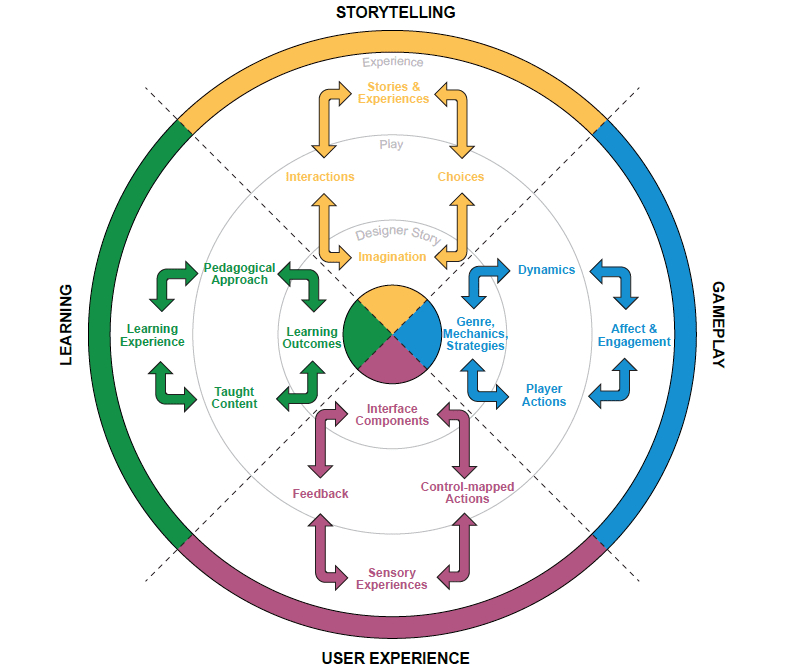Game designers use various principles and mechanics to create engaging and compelling interactive experiences. The core mechanics are the foundation for all gameplay, while progression systems, feedback and rewards, exploration and discovery, multiplayer interactions, and balancing are essential components. Progression systems provide players with a sense of growth and accomplishment, while feedback and rewards keep players motivated. Exploration and discovery encourage players to explore the game world, and multiplayer interactions offer players the opportunity to engage with each other. Balancing ensures that all players feel challenged but not overwhelmed. Understanding these principles is crucial to creating successful and enjoyable gameplay experiences.
The Building Blocks of Game Design: Principles of Gameplay Mechanics
Game design is an art form that has grown rapidly since the early days of video games. From simple arcade games in the 1970s to the complex, immersive experiences of today, game designers have been pushing the limits of what is possible in digital interactive entertainment. However, creating a successful game requires more than just creative ideas and technical expertise.
Game designers use a variety of concepts and principles to create engaging and compelling game mechanics. These mechanics consist of the rules, systems, and interactions that make up the gameplay experience. In this article, we will explore the principles of gameplay mechanics that are the building blocks of game design.
1. Core Mechanics
The core mechanics of a game are the most basic actions that a player can take. These actions may include moving, jumping, shooting, or any other activity that is essential to the game’s genre. Core mechanics are the building blocks from which all other game mechanics are built upon.
For example, in a platformer game, the core mechanics are generally movement and jumping. In a first-person shooter, the core mechanics are usually movement, shooting, and reloading. These core mechanics are refined and augmented with additional mechanics as the game is developed.
2. Progression Systems
Progression systems in games are designed to give players a sense of growth and accomplishment. These systems include leveling up, skill upgrades, unlocking new weapons or abilities, and achievement systems. Progression systems provide meaningful rewards to players for engaging with the game over time.
For example, in RPG games, players level up their characters by earning experience points from completing quests or defeating enemies. Players can unlock new skills and abilities as they level up, which allows them to progress through the game’s story and defeat increasingly challenging enemies.
3. Feedback and Rewards
Feedback and rewards are essential to keep players engaged and motivated. Positive feedback and rewards make players feel accomplished and encourage them to continue playing. These can include visual and auditory cues, such as sound effects or particle effects, as well as in-game rewards, such as new items or abilities.
For example, in puzzle games, players may receive visual feedback for solving a puzzle, such as a sparkle effect or a jingle. In action games, a player may receive an in-game reward, such as a power-up or weapon upgrade, for completing a challenging level or defeating a boss.
4. Exploration and Discovery
Exploration and discovery are crucial to keeping players engaged and interested in a game. Designers use various exploration and discovery mechanics to encourage players to explore the game world and discover new things.
For example, in open-world games, players can explore the game’s environment, uncover hidden areas, and discover new items or quests. In story-based games, players can discover new plot points or character backgrounds by exploring the game’s environment or talking to non-playable characters (NPCs).
5. Multiplayer Interactions
Multiplayer interactions are an essential component of any modern game. These interactions provide players with the opportunity to engage with each other and compete or collaborate to achieve game objectives.
For example, in multiplayer first-person shooters, players can form teams to compete against other teams. In multiplayer MMO games, players can form alliances and complete quests together, which allows them to progress through the game faster and increase the social aspect of gameplay.
6. Balancing
Balancing is one of the most critical elements of game design. Balancing game mechanics ensures that all players feel challenged but not overwhelmed. It also ensures that players can still win even if they make mistakes or encounter challenges.
For example, power-ups or weapons may be designed to be strong but with limited ammo or use, while enemies may have weaknesses that can be exploited by players.
In conclusion, game designers use a variety of principles and mechanics to create engaging and compelling interactive experiences. The core mechanics provide a foundation for all gameplay mechanics, while progression systems, feedback and rewards, exploration and discovery, multiplayer interactions, and balancing are essential components. Understanding these principles is crucial to creating successful and enjoyable gameplay experiences.
